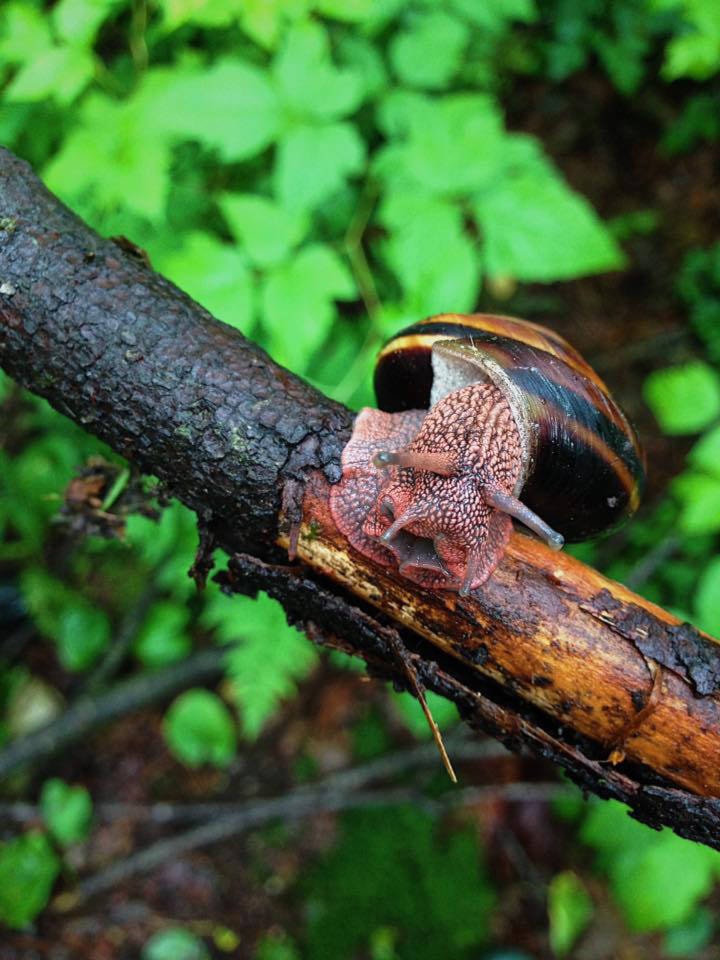By David Clements
I was arrested by the photograph of a Pacific sideband snail. The photo was taken recently by one of my summer student researchers, Delia Anderson.
Technically, it was not too difficult. She and her fellow researchers are charged with studying the wondrous world of the Blaauw Eco Forest in Glen Valley, so it was part of her job to go slowly and pay attention, even to the smallest and slowest of creatures.
And capturing a snail “on film” does not require mad skills. It’s not quite like snapping a picture from a fast-moving jeep of a wildebeest running 70 km per hour on the African Savannah.
What arrested me was something about the look of the snail — its four “antenna-eyes” (as my sons used to call them) staring up at the camera, its translucent yet muscular body rippling with snail strength, and all of this topped off with a ripper of a ribbon-patterned shell.
Incidentally, the larger pair of antennae do act as eye stalks to help the snail see, while both pairs are involved in tactile and chemosensory functions.
The snail itself is an exercise in focusing in, not cutting corners, but moving along every inch of terrain until it finds what it is looking for — some food, a mate, or a good place to chill for a while.
Snails just don’t move very fast. Their survival and well-being is predicated on a slow lifestyle, protected from predators by their shell. They don’t (and can’t) migrate to some far off place when the weather gets dry, as it will later this summer. They just bury themselves in the ground and take a nap.
My colleague at Trinity Western, Karen Steensma, and her students did a study of the movements of the Pacific sideband’s cousin, the Oregon forestsnail. Through extensive snail tracking using radio telemetry, they found the maximum distance a snail moved in a day was 4.5 m.
Four-and-a half meters a day is not bad for a snail, but very pedestrian from a human standpoint, where the goal these days is often 10,000 steps a day.
How do we take these steps? Are we dashing from place to place without stopping to smell the roses? Or see the snails? Is everything a blur?
I’m not saying that it’s bad to be efficient. I am saying that to truly appreciate the wonder of something as intricate as a snail, we need to slow down sometimes. I know I do.
How slow can you go?
David Clements is Professor of Biology and Environmental Studies at Trinity Western University
